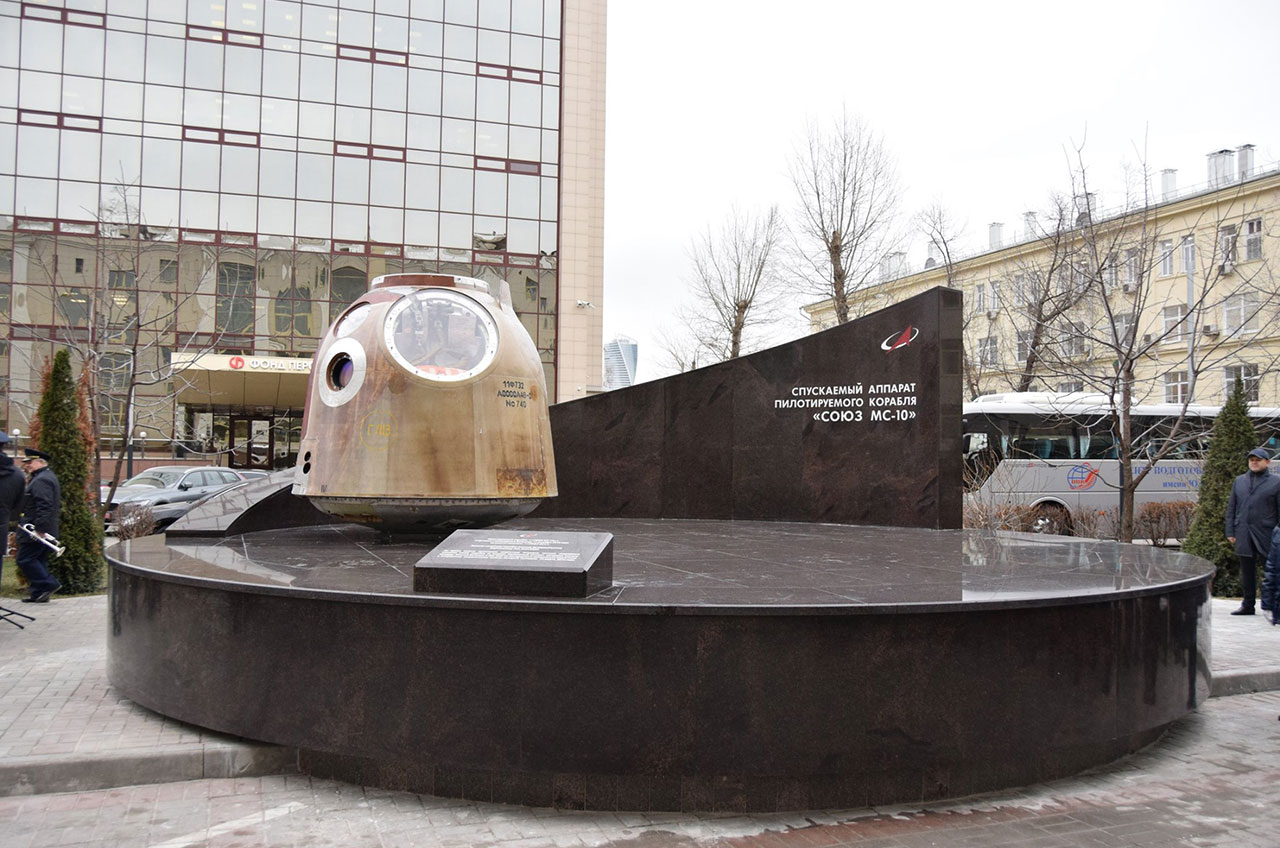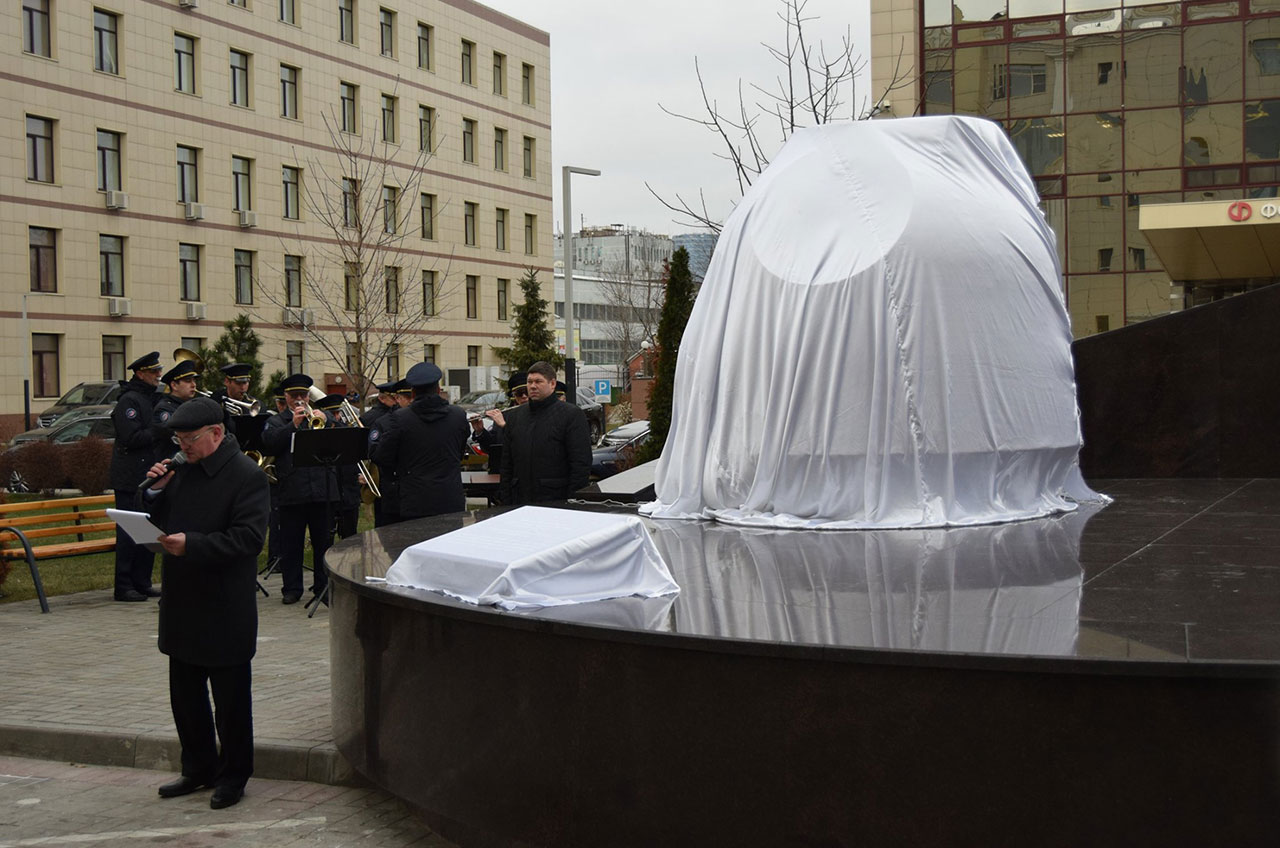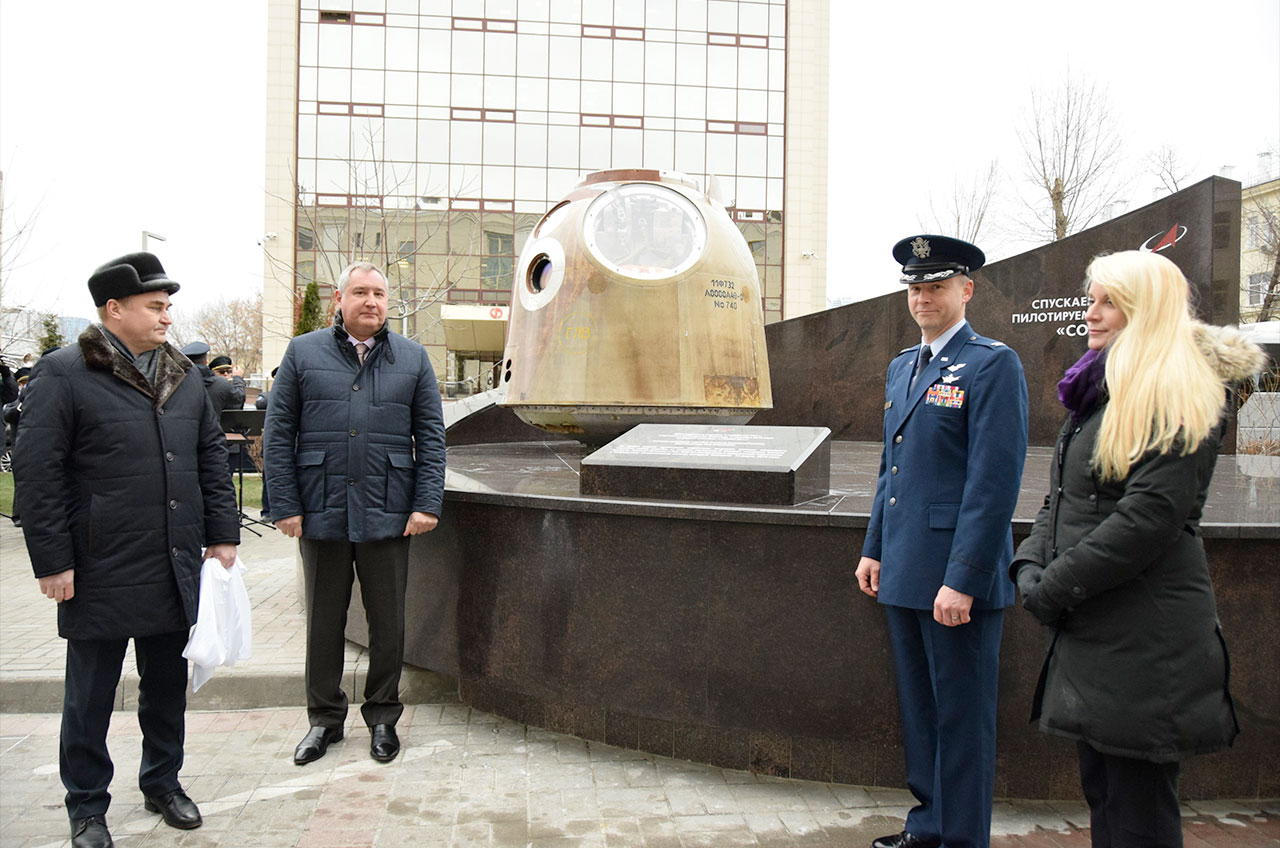Soyuz Space Capsule That Flew Emergency Abort Lands on Display in Moscow

A Russian space capsule that carried its crew to a landing after the rocket it was atop broke apart mid-flight has touched down in Moscow as a monument to mission safety.
The Soyuz MS-10 descent module that on Oct. 11, 2018 made an emergency return to Earth with cosmonaut Aleksey Ovchinin and astronaut Nick Hague was unveiled as part of a new installation outside of the headquarters of the Russian space agency Roscosmos on Monday (Dec. 2).
"What happened proves the most important thing: there is nothing more important than flight safety," said Dmitry Rogozin, director general of Roscosmos. "We decided to put the descent module here, next to the head office of the State Corporation Roscosmos, for the simple reason that we all need to remember that day and not forget about our duty that we must do everything so that our space program works without failures."
In Photos: Space Station Crew's Harrowing Abort Landing After Soyuz Launch Failure
The monument displays the gumdrop-shaped craft atop a raised granite base backdropped by a rising wall that is adorned with the Roscosmos insignia and the inscription, "Descent Module, Crew Capsule, Soyuz MS-10" in Cyrillic. A plaque mounted in front of the spacecraft details its history.
Launched from the Baikonur Cosmodrome on a mission to deliver Ovchinin and Hague to the International Space Station, the Soyuz MS-10 spacecraft executed an abort two minutes into its ascent after its Soyuz FG rocket's first and second stages collided during separation. The MS-10 vehicle fired its thrusters to get clear of the failing booster and then followed a ballistic trajectory, reaching an apogee of 58 miles (93 kilometers) before landing 250 miles (402 kilometers) from the launch site on the steppe of Kazakhstan.
The entire flight lasted just under 20 minutes long.
Breaking space news, the latest updates on rocket launches, skywatching events and more!
An investigation later found that the launch failure was the result of a sensor that was damaged during the rocket's assembly at the cosmodrome.
Ovchinin and Hague, having survived the abort, launched again in March aboard Soyuz MS-12. They returned from the space station in early October.
On Monday, the two crewmates attended the monument's dedication and helped to unveil their original spacecraft from under a white drape.
Hague was also honored. Rogozin presented the NASA astronaut with the Order of Courage, a Russian award that recognizes selfless acts of courage and valor.
"Nick, you deserve to get this decoration," said Rogozin, as he pinned the medal to Hague's U.S. Air Force uniform, according to state media reports.
The director general thanked both Ovchinin and Hague for their "courage, self-control and the highest professionalism shown in these 'difficult, difficult minutes,'" Roscosmos described on its website.
The MS-10 spacecraft was only the third Soyuz to fly an abort, after a similar in-flight rocket failure in 1975 and a fire on the launch pad in 1983. The Soyuz MS-10 launch was the 139th flight of a Soyuz vehicle.
- Russians ID Cause of Soyuz Launch Abort, Release Dramatic Rocket Video
- Eyewitness Observer of Dramatic Soyuz Launch Abort Describes What He Saw
- Here's How Space Agencies Prepare to Rescue Astronauts During Soyuz Launch Aborts and Landings
Follow collectSPACE.com on Facebook and on Twitter at @collectSPACE. Copyright 2019 collectSPACE.com. All rights reserved.


Robert Pearlman is a space historian, journalist and the founder and editor of collectSPACE.com, a daily news publication and community devoted to space history with a particular focus on how and where space exploration intersects with pop culture. Pearlman is also a contributing writer for Space.com and co-author of "Space Stations: The Art, Science, and Reality of Working in Space” published by Smithsonian Books in 2018.
In 2009, he was inducted into the U.S. Space Camp Hall of Fame in Huntsville, Alabama. In 2021, he was honored by the American Astronautical Society with the Ordway Award for Sustained Excellence in Spaceflight History. In 2023, the National Space Club Florida Committee recognized Pearlman with the Kolcum News and Communications Award for excellence in telling the space story along the Space Coast and throughout the world.



